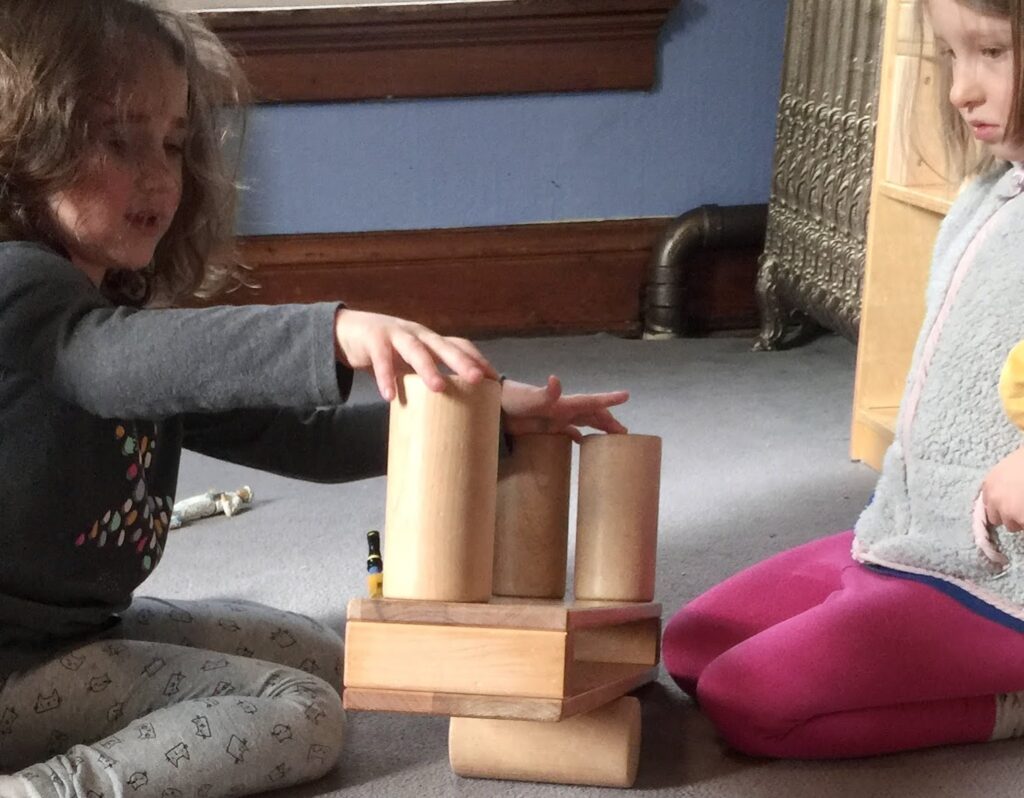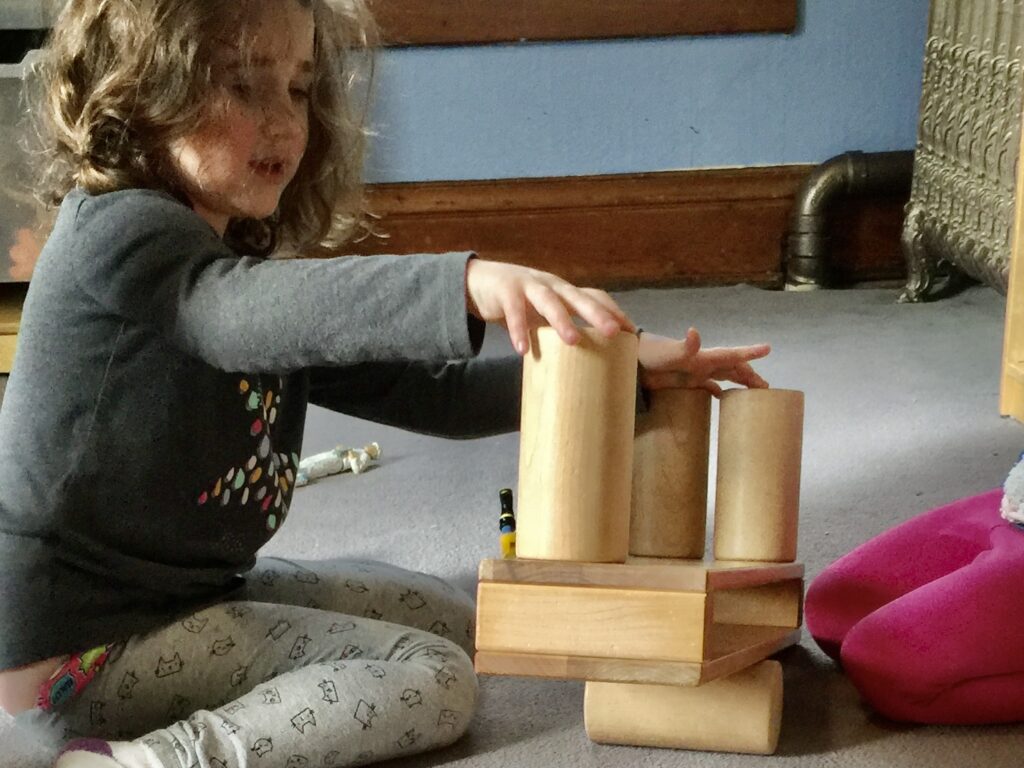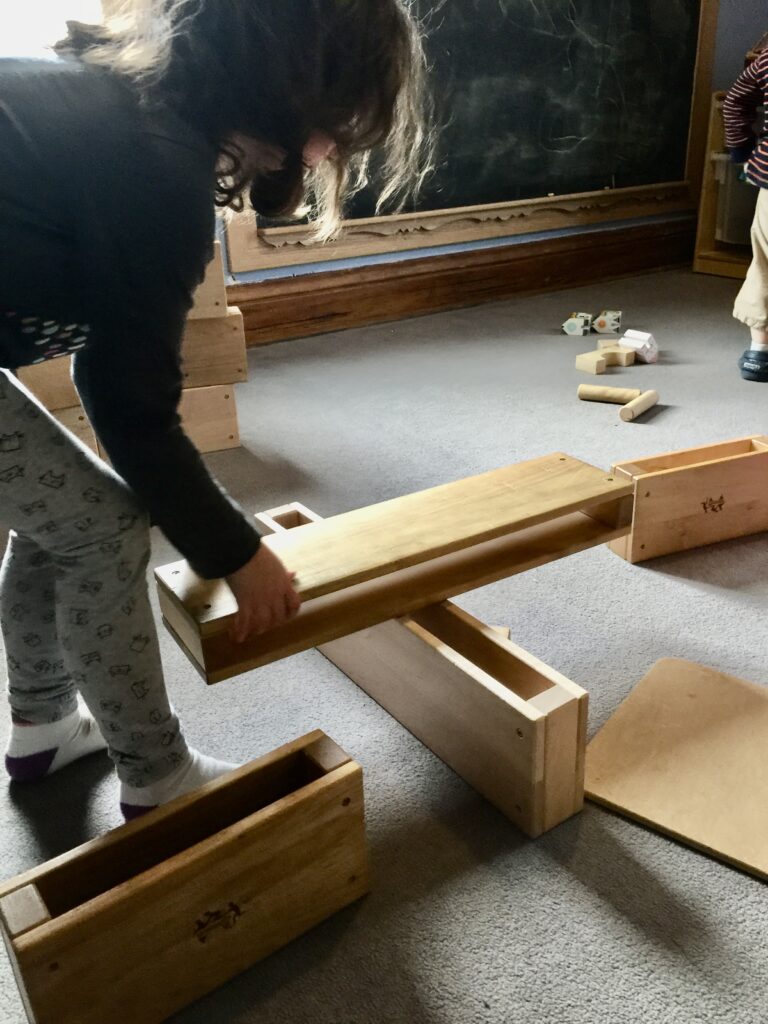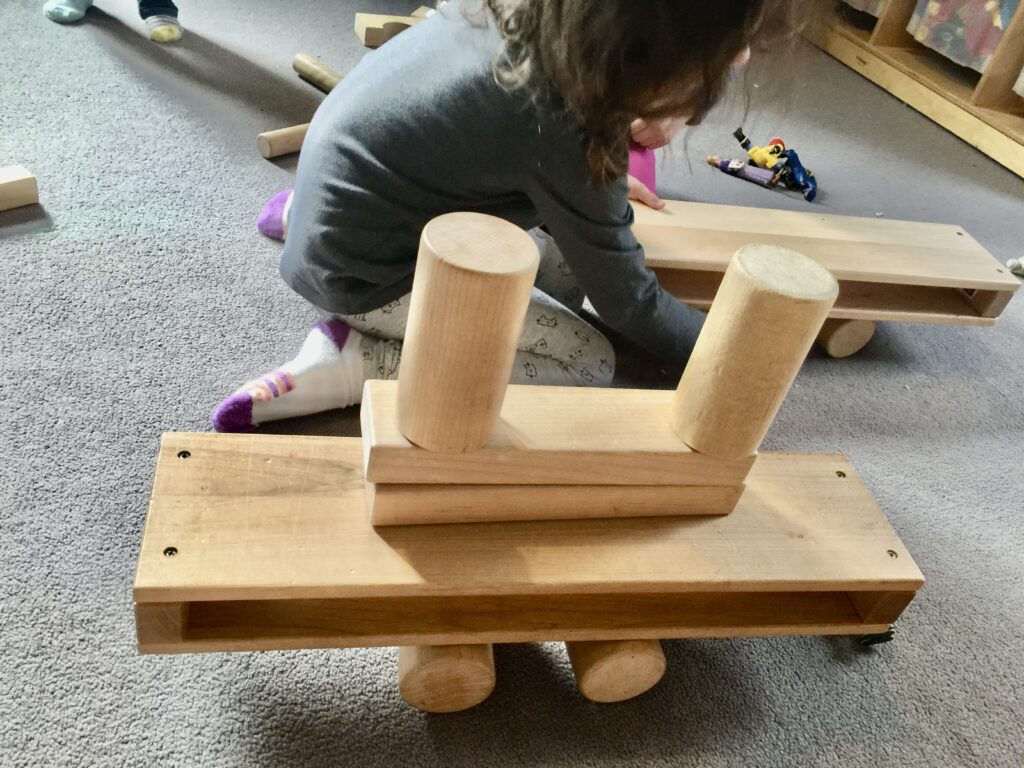Blocks, Balance and Investigations

“I think we need another cylinder on this side. Can you put that on for me? I will keep it balanced.”
Rowan and Parker are deeply engrossed in block play. Their investigations into balance, gravity, force, and cause and effect have led these four-year-old friends deep into the STEM zone!
“Do you want the big cylinder or the small one?” asks Parker.
Measurement skills are important and this activity gives the girls an opportunity to experiment with size, shape, volume, area and weight. All of these activities can be carried out with unit blocks.
“We need the big one,” says Rowan. “See the two big ones on that side? We need another big one on this side.”
“I think so too!” says Parker as she carefully adds a big cylinder to the block structure.

By asking questions, making observations and gathering information, the two friends are following the scientific method—just like real-life scientists!
When you give children ample time to explore and investigate, the learning becomes even more relevant. As they experiment and explore concepts such as cause and effect, children are able to develop their problem-solving skills, test hypotheses and use scientific reasoning.

I’ve mentioned my love of Magna-Tiles in the past, but I secretly worry that these magnetic tiles have the potential to turn us into lazy builders.
Sometimes I become so concerned about this that I remove Magna-Tiles from our play rotation. Whenever we return to wooden blocks—and unit blocks in particular—my heart soars and I love teaching all the more.
I know that I’m biased, but I truly believe that—if we were to limit the learning materials in early childhood classrooms to blocks, loose parts and great books—we’d have everything we needed to prepare young learners for success in school and in life.
Childhood is a time when children are “learning to learn.” Early childhood education activities should tap into children’s natural curiosity as they discover new interests and new ways of making sense of their world.
An inviting block-play area will create limitless possibilities for hands-on investigating and experimenting. Unit blocks and long periods of play used to be the standard in kindergarten classrooms across the nation. If your budget allows—or you have an opportunity to secure a STEM grant; Universal Preschool, Pre-K or Kindergarten Readiness funding; or a donation from a generous parent or grandparent—please bring back the unit blocks!

Blocks help children learn about gravity, balance, weight and spatial awareness. Block play is especially good for spatial learning because it provides opportunities for children to arrange objects and see what happens. Each building that rises and falls is an investigation into how things work in the physical world.
We often hear that block play fosters the development of fine-motor skills, coordination and other areas of physical development. But you rarely hear educators talk about the executive function and self-regulation skills that children develop through block play. Working as a team or carefully adding a block to a tower without knocking it down requires self-control, patience, persistence and resilience.
Best of all, this is child-led play, with curiosity and wonder opening doors to learning and discovery.

“Hey, I think we could make skateboards!” suggests Rowan. “Do you want to try it out?”
Yikes, I think we’ve just hatched another STEM learning adventure! Blocks offer opportunities to test hypotheses and build scientific reasoning skills. Moments like these add risk-taking to the joy!
I move a little closer, but only to lend a hand if Rowan needs me. I want her investigation to continue. Children usually don’t tackle problems that they don’t think they can solve. As educators, sometimes we just have to trust their instincts.
After a few quick attempts at fashioning a skateboard that none of the children are brave enough to try out, Rowan moves on to something new. Whew! Thank goodness!
Productive block play takes time, so 15 or 20 minutes won’t be sufficient. You can’t teach creativity. But you can give children the gift of time for hands-on investigations with materials that encourage creative play.
These extended play periods foster a deeper level of engagement, which will help your early learners meet their benchmarks faster than you can check them off of the learning standards list.
Ready for more STEM investigations? Check out our Early Science Matters lesson plan, How Many Legos Tall?
Then find out more about The Many Benefits of Block Play at our newest early learning website, ReadyChild.org!
The kids in my room would love to make with cars and all
The children in my classrooms love to build briges with the blocks they even build buildings.
The children in my classrooms love to build bridges with the blocks they even build there house.
The children in my classrooms love to build bridges with the blocks.
It’s very important
I love the idea of block-play creating limitless possibilities for hands on experimenting. Child led play with curiosity and wonder begin to use the practices of science and engineering to answer question and solve problems.
G Shackelford
Hands on block play is a curiosity that leads into wondering about many levels of construction. It also draws many questions about the physical nature of different shapes in our world. I love it.
Lamont Jackson
I love the idea of different ways to experiment
We have plenty blocks so I can implement different activities for the children to learn
A great STEM activity. I will have to do this one with my children.
I think this is a great way to peek a child curiosity. Children would enjoy getting hands on to figure out how the blocks are able to balance.